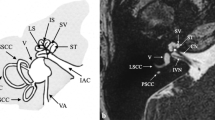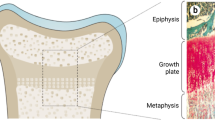Abstract
Purpose of Review
Our goal is to provide a practical approach to the genetic evaluation of children with sensorineural hearing loss for use by practicing clinicians. We present the most recent research in the field followed by our recommended diagnostic algorithm incorporating genetic testing. We then provide case examples of commonly encountered patient presentations as further guidance.
Recent Findings
Genetic testing has the highest diagnostic yield of any single test in the evaluation of children with congenital bilateral severe-to-profound hearing loss. For unilateral or asymmetric hearing loss, imaging is typically more informative initially than genetic testing. Recent data show that syndromic forms of hearing loss are more common than previously appreciated.
Summary
A thorough and systematic evaluation of children with hearing loss that incorporates genetic testing leads to earlier diagnosis and treatment. This in turn leads to improved speech and language outcomes for children with hearing loss.
Similar content being viewed by others
References
Mehra S, Eavey RD, Neck DKJO-H. The epidemiology of hearing impairment in the United States: newborns, children, and adolescents. Elsevier. 2009;140(4):461–72.
Morton CC, Nance WE. Newborn hearing screening—a silent revolution. N Engl J Med. 2006;354(20):2151–64.
Qi S, Mitchell RE. Large-scale academic achievement testing of deaf and hard-of-hearing students: past, present, and future. J Deaf Stud Deaf Educ. 2011;17(1):1–18.
Teasdale TW, Sorensen MH. Hearing loss in relation to educational attainment and cognitive abilities: a population study: Hipoacusia en relación con los logros educativos y las habilidades cognitivas: Estudio en una población. Int J Audiol. 2007;46(4):172–5.
Fitzpatrick EM, Gaboury I, Durieux-Smith A, Coyle D, Whittingham J, Nassrallah F. Auditory and language outcomes in children with unilateral hearing loss. Hear Res. 2019;372:42–51.
Lieu JEC. Speech-language and educational consequences of unilateral hearing loss in children. Arch Otolaryngol - Head Neck Surg. 2004;130(5):524–30.
Lieu JE, Tye-Murray N, Karzon RK, Piccirillo JF. Unilateral hearing loss is associated with worse speech-language scores in children. Pediatrics. 2010;125(6):e1348–55.
Moore DR, Zobay O, Ferguson MA. Minimal and mild hearing loss in children: association with auditory perception, cognition, and communication problems. Ear Hear. 2019;1.
Roland L, Fischer C, Tran K, Rachakonda T, Kallogjeri D, Lieu JE. Quality of life in children with hearing impairment: systematic review and meta-analysis. Otolaryngol Neck Surg. 2016;155(2):208–19.
Loy B, Warner-Czyz AD, Tong L, Tobey EA, Roland PS. The children speak: an examination of the quality of life of pediatric cochlear implant users. Otolaryngol--Head Neck Surg Off J Am Acad Otolaryngol-Head Neck Surg. 2010;142(2):247–53.
Yoshinaga-Itano C, Sedey AL, Wiggin M, Mason CA. Language outcomes improved through early hearing detection and earlier cochlear implantation. Otol Neurotol. 2018;39(10):1256–63.
Green GE, Scott DA, McDonald JM, Woodworth GG, Sheffield VC, Smith RJ. Carrier rates in the midwestern United States for GJB2 mutations causing inherited deafness. Jama. 1999;281(23):2211–6.
Hilgert N, Smith RJ, Van Camp G. Forty-six genes causing nonsyndromic hearing impairment: which ones should be analyzed in DNA diagnostics? Mutat Res Mutat Res. 2009;681(2–3):189–96.
Shearer AE, Shen J, Amr S, Morton CC, Smith RJ. A proposal for comprehensive newborn hearing screening to improve identification of deaf and hard-of-hearing children. Genet Med Off J Am Coll Med Genet. 2019;1–17.
Shearer AE, DeLuca AP, Hildebrand MS, Taylor KR, Gurrola J, Scherer S, et al. Comprehensive genetic testing for hereditary hearing loss using massively parallel sequencing. Proc Natl Acad Sci. 2010;107(49):21104–9.
Shearer AE, Smith RJH. Massively parallel sequencing for genetic diagnosis of hearing loss: the new standard of care. Otolaryngol – Head Neck Surg. 2015;153(2):175–82.
Shearer AE, Hildebrand MS, Sloan CM, Smith RJH. Deafness in the genomics era. Hear Res. 2011;282(1–2):1–9.
Sloan-Heggen CM, Bierer AO, Shearer AE, Kolbe DL, Nishimura CJ, Frees KL, et al. Comprehensive genetic testing in the clinical evaluation of 1119 patients with hearing loss. Hum Genet. 2016;135(4):441–50.
Nishio S, Usami S. Deafness gene variations in a 1120 nonsyndromic hearing loss cohort: molecular epidemiology and deafness mutation spectrum of patients in Japan. Ann Otol Rhinol Laryngol. 2015;124(1_suppl):49S–60S.
Wentland CJ, Ronner EA, Basonbul RA, Pinnapureddy S, Mankarious L, Keamy D, et al. Utilization of diagnostic testing for pediatric sensorineural hearing loss. Int J Pediatr Otorhinolaryngol. 2018;111:26–31.
Tekin D, Tutar E, Akay HO, Blanton S, Foster J, Tekin M. Comprehensive genetic testing can save lives in hereditary hearing loss. Clin Genet. 2015;87(2):190–1.
Sheppard S, Biswas S, Li MH, Jayaraman V, Slack I, Romasko EJ, et al. Utility and limitations of exome sequencing as a genetic diagnostic tool for children with hearing loss. Genet Med. 2018;20(12):1663–76.
Bamshad MJ, Ng SB, Bigham AW, Tabor HK, Emond MJ, Nickerson DA, et al. Exome sequencing as a tool for Mendelian disease gene discovery. Nat Rev Genet. 2011;12(11):745–55.
Downie L, Halliday J, Burt R, Lunke S, Lynch E, Martyn M, et al. Exome sequencing in infants with congenital hearing impairment: a population-based cohort study. Eur J Hum Genet. 2019;1–10.
Liu P, Meng L, Normand EA, Xia F, Song X, Ghazi A, et al. Reanalysis of clinical exome sequencing data. N Engl J Med. 2019;380(25):2478–80.
Van der Auwera GA, Carneiro MO, Hartl C, Poplin R, Del Angel G, Levy-Moonshine A, et al. From FastQ data to high-confidence variant calls: the genome analysis toolkit best practices pipeline. Curr Protoc Bioinformatics. 2013;43(1):11–0.
Ellingford JM, Barton S, Bhaskar S, Williams SG, Sergouniotis PI, O’Sullivan J, et al. Whole genome sequencing increases molecular diagnostic yield compared with current diagnostic testing for inherited retinal disease. Ophthalmology. 2016;123(5):1143–50.
Hao Z, Fu D, Ming Y, Yang J, Huang Q, Lin W, et al. Large scale newborn deafness genetic screening of 142,417 neonates in Wuhan, China. Bandapalli OR, editor. PLoS One. 2018;13(4):e0195740–15.
He X, Li X, Guo Y, Zhao Y, Dong H, Dong J, et al. Newborn screening of genetic mutations in common deafness genes with bloodspot-based gene chip array. Am J Audiol. 2018;27(1):57–11.
Wang Q-J, Zhao Y-L, Rao S-Q, Guo Y-F, He Y, Lan L, et al. Newborn hearing concurrent gene screening can improve care for hearing loss: a study on 14,913 Chinese newborns. Int J Pediatr Otorhinolaryngol. 2011;75(4):535–42.
Shearer AE, Eppsteiner RW, Booth KT, Ephraim SS, Gurrola J, Simpson A, et al. Utilizing ethnic-specific differences in minor allele frequency to recategorize reported pathogenic deafness variants. Am J Hum Genet. 2014;95(4):445–53.
Liming BJ, Carter J, Cheng A, Choo D, Curotta J, Carvalho D, et al. International pediatric otolaryngology group (IPOG) consensus recommendations: hearing loss in the pediatric patient. Int J Pediatr Otorhinolaryngol. 2016;90:251–8.
Alford RL, Arnos KS, Fox M, Lin JW, Palmer CG, Pandya A, et al. American College of Medical Genetics and Genomics guideline for the clinical evaluation and etiologic diagnosis of hearing loss. Genet Med. 2014;16(4):347–55.
Jayawardena ADL, Shearer AE, Smith RJH. Sensorineural Hearing Loss: A Changing Paradigm for Its Evaluation. Otolaryngol – Head Neck Surg. 2015.
Ross SA, Ahmed A, Palmer AL, Michaels MG, Sánchez PJ, Stewart A, et al. Newborn dried blood spot polymerase chain reaction to identify infants with congenital cytomegalovirus-associated sensorineural hearing loss. J Pediatr. 2017;184:57–61.
Gantt S, Dionne F, Kozak FK, Goshen O, Goldfarb DM, Park AH, et al. Cost-effectiveness of universal and targeted newborn screening for congenital Cytomegalovirus infection. JAMA Pediatr. 2016 Dec 1;170(12):1173–80.
Fowler KB, McCollister FP, Sabo DL, Shoup AG, Owen KE, Woodruff JL, et al. A targeted approach for congenital cytomegalovirus screening within newborn hearing screening. Pediatrics. 2017;139(2):e20162128.
Lanzieri TM, Chung W, Flores M, Blum P, Caviness AC, Bialek SR, et al. Hearing loss in children with asymptomatic congenital cytomegalovirus infection. Pediatrics. 2017;139(3):e20162610.
Meyer L, Sharon B, Huang TC, Meyer AC, Gravel KE, Schimmenti LA, et al. Analysis of archived newborn dried blood spots (DBS) identifies congenital cytomegalovirus as a major cause of unexplained pediatric sensorineural hearing loss. Am J Otolaryngol. 2017;38(5):565–70.
Peterson J, Nishimura C, Smith RJH. Genetic testing for congenital bilateral hearing loss in the context of targeted cytomegalovirus screening. Laryngoscope. 2020;lary.28536.
Chen JX, Kachniarz B, Shin JJ. Diagnostic yield of computed tomography scan for pediatric hearing loss: a systematic review. Otolaryngol Neck Surg. 2014;151(5):718–39.
Kachniarz B, Chen JX, Gilani S, Shin JJ. Diagnostic yield of MRI for pediatric hearing loss: a systematic review. Otolaryngol Neck Surg. 2015;152(1):5–22.
Licameli G, Kenna MA. Is computed tomography (CT) or magnetic resonance imaging (MRI) more useful in the evaluation of pediatric sensorineural hearing loss? Laryngoscope. 2010;120(12):2358–9.
Joint Committee on Infant Hearing. Year 2007 position statement: principles and guidelines for early hearing detection and intervention programs. Pediatrics. 2007;120(4):898–921.
Funding
Dr. Kenna receives support from NIDCD DC015052.
Author information
Authors and Affiliations
Corresponding author
Additional information
Publisher’s Note
Springer Nature remains neutral with regard to jurisdictional claims in published maps and institutional affiliations.
This article is part of the Topical collection on Hearing Loss in Children
Rights and permissions
About this article
Cite this article
Shearer, A.E., Kenna, M. A Practical Approach to Genetic Testing for Pediatric Hearing Loss. Curr Otorhinolaryngol Rep 8, 250–258 (2020). https://doi.org/10.1007/s40136-020-00296-5
Published:
Issue Date:
DOI: https://doi.org/10.1007/s40136-020-00296-5




